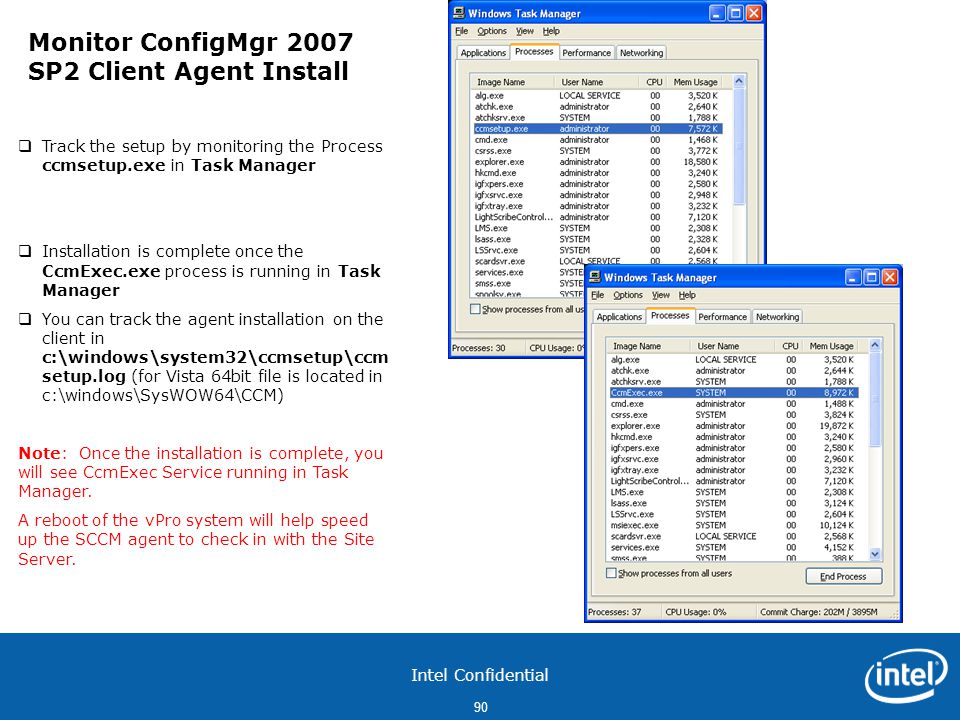A Duplicate Execution Request Is Found For Program Install Sccm 2007

UpdateStar is compatible with Windows platforms. Dil Diya Hai All Songs Mp3 Download. UpdateStar has been tested to meet all of the technical requirements to be compatible with Windows 10, 8.1, Windows 8, Windows 7, Windows Vista, Windows Server 2003, 2008, and Windows XP, 32 bit and 64 bit editions.
Jun 21, 2012. Policy is updated for Program: *, Package: x0017C, Advert: x20128 execmgr 13: (0x0984). A duplicate execution request is found for program * execmgr 13: (0x0E2C). Execution Request for package x0017C program * state change from WaitingContent to. Hi Guys, I'me having an issue with deploying one particular application in SCCM 2012. It appears that. [LOG[Execution Request for advert CAS20141 package MDS0061F program Install-Microsoft Lync 2013_x32 15.0 p1.2 state change from NotExist to WaitingDisabled]LOG]!.

Simply double-click the downloaded file to install it. UpdateStar Free and UpdateStar Premium come with the same installer. UpdateStar includes such as English, German, French, Italian, Hungarian, Russian and. You can choose your language settings from within the program.
I am often asked what the best way is to manage drivers with both BDD/MDT and ConfigMgr. With this in mind I thought I would create two blog posts dealing with this topic. The first post (this one) will cover ConfigMgr and the second BDD/MDT driver management. Please note this is not the only way to manage drivers, there are many different ways to manage drivers. However this is an approach that I have used many times with much success. Overview Before I get into the details I would like to provide a quick overview of driver management. The first thing we must understand is the type of drivers that you need to manage.
I place drivers into two categories: • NICE Drivers - Drivers that install using an INF file. Candy Crush Mp3 Song Download here. • BAD Drivers - Drivers that must be 'installed' - This could be a Bluetooth driver, finger print reader software or even DVD software that is specific to a particular model type. I also refer to these drivers as 'Hardware based applications'.
Next we need to understand where drivers are used during the deployment process. There are two areas where they are used: • Host OS - These are drivers that are installed on the Host OS. • Boot images - These are drivers that are required by the ConfigMgr Windows PE boot images to enable OS deployment. The key driver types are network and mass storage drivers. Finally we need to understand the options ConfigMgr provides for installing drivers. Whenever you import drivers you must add them to a driver package. Once the drivers have been added to a package there are two methods you can use to install the drivers: • Auto apply drivers - Driver packages are primarily for distribution purposes.
ConfigMgr performs a PnP scan of the computer and chooses which drivers to install from all available drivers in all available driver packages. You can filter by driver categories, is tells ConfigMgr to only consider certain categories when choosing drivers. • Apply driver package - All the drivers in the package are injected, whether they are needed or not. So now that I have covered the basics lets discuss how I manage drivers. Process I find the simplest way to describe how I manage drivers is by using an example. The example I will use I perhaps the most common scenario in OS deployment, adding support for a new hardware model. Looking forward to it.
In the mean time, here is the issue I’m having: I’m trying to deploy a Windows XP WIM image to a Dell Latitude D610 using the MDT 2008. The image was captured from the laptop with no drivers added, not sysprepped. I’m trying to deploy it back and have it install all of the drivers for the laptop. I’ve added the drivers to the Out-of-Box Drivers in the Distribution Share and created a group for the drivers, they also happen to be the only drivers I’ve added at this point. After deploying the image and going back into Windows, none of the drivers have installed.
I’ve also copied them to the $OEM$ share with no luck. I’ve been searching for a solution for this for about a week now but it seems no one has had an issue with this and can only find the standard answers of adding the drivers to the Out-of-Box drivers and $OEM$ share. I have not made any modifications to my Task Sequence. I attempted adding the LTIapply.wsf script after the Install Operating System task in hopes that it would copy the drivers before rebooting, but alas no luck.